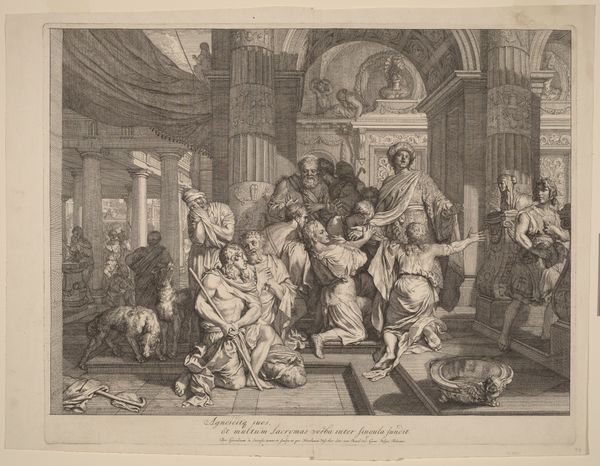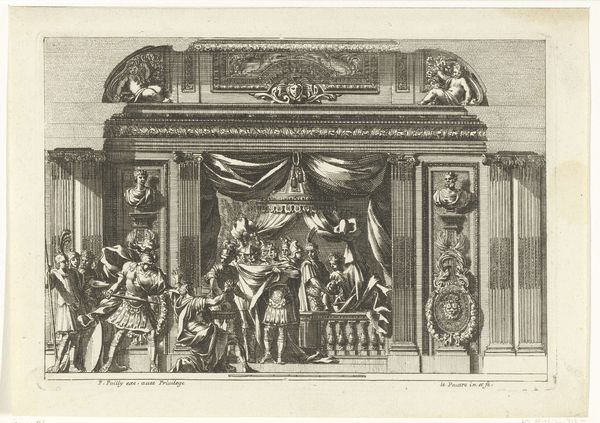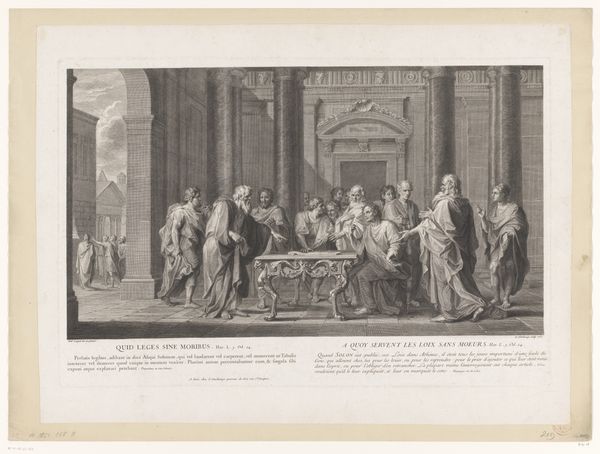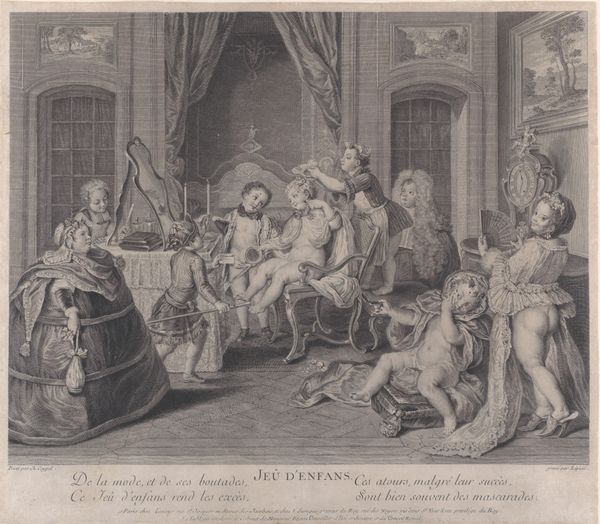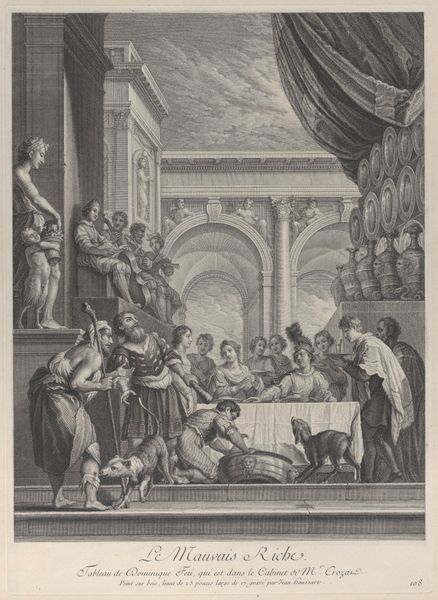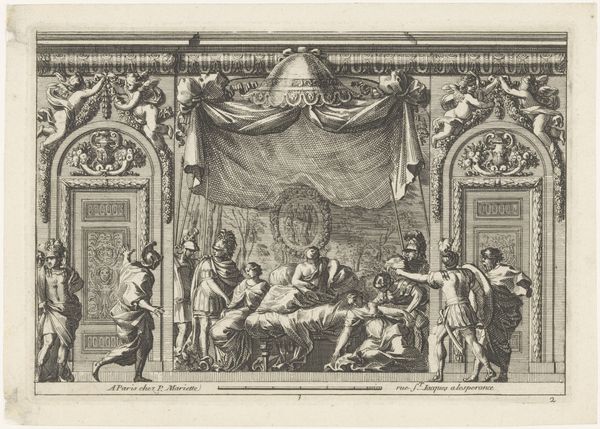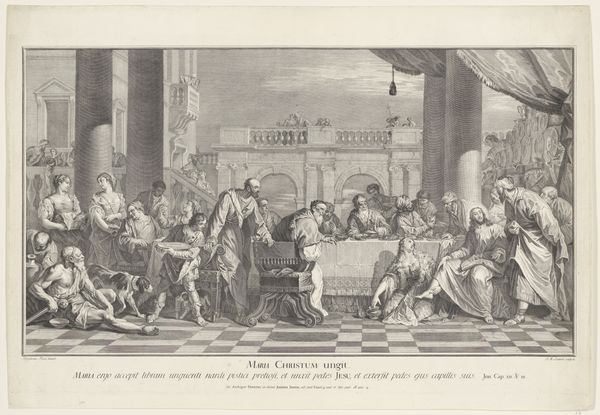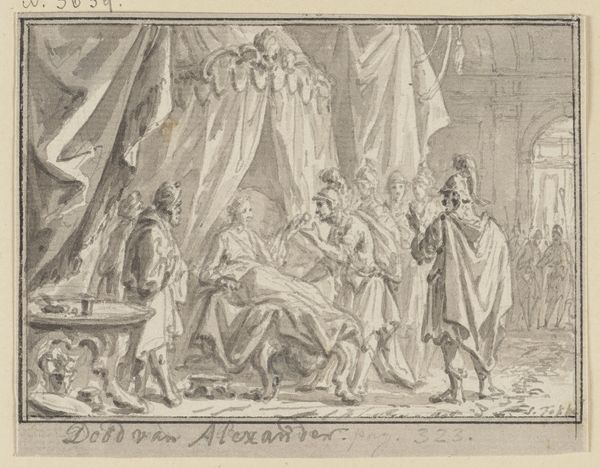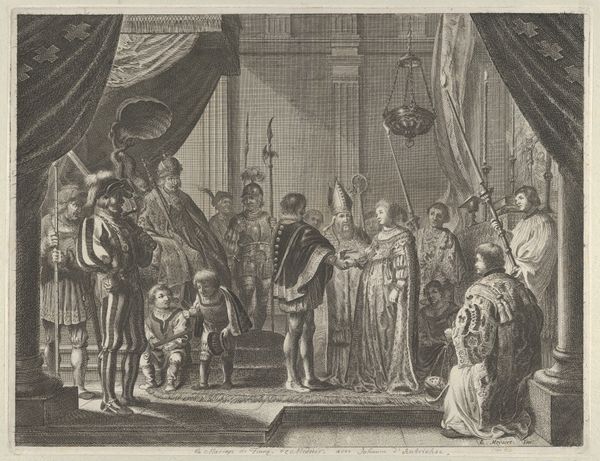
print, engraving
#
narrative-art
#
baroque
# print
#
old engraving style
#
history-painting
#
engraving
Dimensions: height 510 mm, width 595 mm
Copyright: Rijks Museum: Open Domain
Curator: Let's discuss this compelling engraving, "Ester en Haman voor koning Ahasveros," crafted before 1737 by Pieter van den Berge. It's currently held in the Rijksmuseum's collection. Editor: The texture jumps out; the sheer busyness of the linework almost vibrates. You can see the hand that crafted it. Is it attempting drama with those intense dark-and-light contrasts? Curator: Van den Berge masterfully employs baroque stylistic conventions, emphasizing dynamic movement and rich ornamentation. Observe how the scene unfolds cinematically. Editor: There's definitely a theatrical stage-like quality. The columns, drapery… what about the socio-political narrative behind it all? Curator: This piece is essentially history painting, referencing the Book of Esther. Notice how Esther positions herself – and by extension the Hebrew people. The arrangement is carefully structured, wouldn’t you agree? Ahasuerus in the middle flanked by the other two. Editor: It strikes me as the power dynamics seem quite deliberately showcased through visual hierarchy. Note Ahasuerus seated above both. And where are we to see this in history; does it serve more than entertainment. Curator: Perhaps we could frame it as an expression of period moral and ethical views within society itself. Look at the use of shading in that instance; consider it creating space versus merely rendering shape. Editor: Indeed. I must confess the level of detailing is somewhat distracting from my effort to find larger socio-political resonance, but there's clearly an interesting complexity present. Curator: Reflecting upon our discussion, I see this piece’s value further enriched through its masterful compositional rigor. Editor: Yes, and through exploring both the form and background, something has truly revealed itself today.
Comments
No comments
Be the first to comment and join the conversation on the ultimate creative platform.


